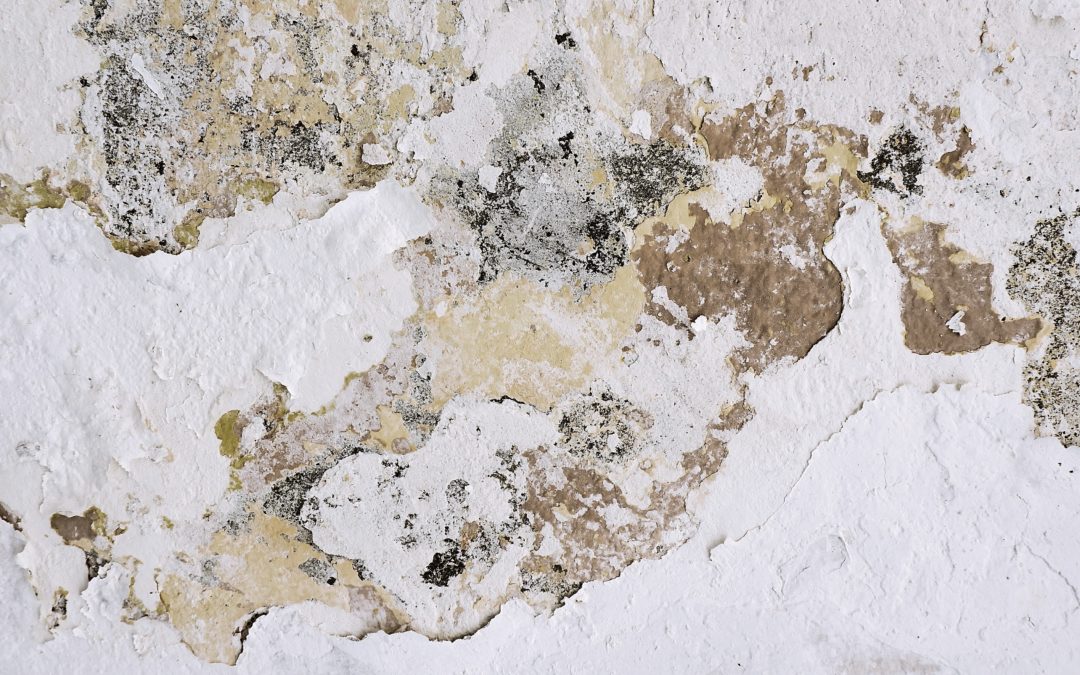Mold is a type of fungus that grows in multicellular clusters and spreads through microscopic spores. It’s a common issue in houses, breeding in low light and damp environments. That makes showers, broken pipes, flood sites, and poor ventilation ideal recipes for any number of household fungal infections.
Unchecked, this prolific organism can damage structures, lower your property value, and even make you ill. No doubt about it, without proper maintenance, a little moisture can fester into a homeowner’s nightmare. That makes it critical to know how to clean up mold, and when to seek an expert’s help.
How to Clean Up Mold
Step One of Mold Removal: Preparation
- Naturally, the first step is inspection, which should include proper testing and assessment. That will help you build a plan, and inform every other step thereafter.
- Next, you’ll want to purchase your safety gear, which should include a proper mask, such as a P-100 respirator. Remember to wear goggles or gloves during the entire process and be sure to avoid cross-contamination.
- Now turn off your furnace or air conditioner and cover ducts and doors to contain spores. (If you suspect mold in your ventilation system, we strongly recommend a professional consultation.)
- Seal off the room and utilize air filtration devices to generate negative pressure and create containment for the infected space.
- Remove or cover furniture and personal items. (Be aware that anything you keep may contain spores. Use good judgment about what to hold on to or clean, or seek professional advice.)
Remove Contaminated Materials
- Depending on the extent of the damage, you may have to remove carpet, walls, baseboards, tiles, and more.
- Make sure to contain discarded materials in plastic bags to avoid spreading spores and vacuum up all debris. In general, we recommend using a HEPA vacuum over household vacuums, since you don’t want to spread spores throughout your home. Be sure to wash the tank and hoses and change the filter after the job’s complete.
Treating Remaining Surfaces
- Please note that it is important to follow all EPA guidelines when mitigating and remediating mold.
- Thoroughly vacuum the entire surface with a HEPA vacuum. This must include an area two feet beyond any visible mold.
- Mix the fungicide you have selected per the recommendations on the label. Then, scrub the contaminated surface and leave to dry. Wiping away excess moisture is acceptable, but do not rinse.
- Encapsulate the treated area with a nonpermeable barrier.
- Once the treatment is complete, containment and ventilation should remain in effect for three days.
- Immediately wash your clothing after treating mold, and dispose of rags in a sealed garbage bag.
- If the mold removal process succeeded (have a professional test if you aren’t sure), you may now begin repair work.
Should You Remove Mold on Your Own?
In general, we suggest leaving larger mold remediation projects to professionals. This is because certain types of mold are dangerous and spread quickly. Furthermore, some materials (like wood) require specific techniques to disinfect.
The EPA offers similar guidelines as well. They suggest following their guide for proper remediation for any infection over 10 square feet, which may include hiring a reputable contractor.
Be aware that in order to fully mitigate mold, you must remove the source of moisture. In other words, without addressing the cause, mold will simply return. That is another advantage of hiring a professional. They have the training to identify where the problem started. (It is also possible to exasperate mold issues if you don’t know what you’re doing.)
If your mold issue is small, you’re probably fine to attempt it on your own. However, we’re sure you’ll have questions as you go, so don’t be afraid to ask for help. Call a mold remediation company in your area for more information. Or, if you’re in Utah, you can call us. AEI Decon has over a decade of experience in mold removal and mitigation, and we’re happy to help. You can reach us at (801) 888-6698.
Photo by Andrew Buchanan on Unsplash

